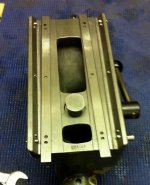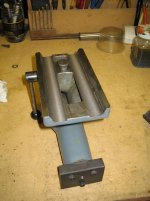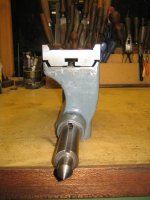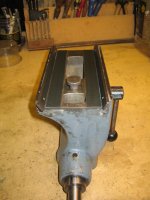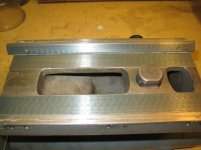cinematechnic
Cast Iron
- Joined
- Apr 11, 2005
- Location
- Walnut Creek, CA
I recently moved my Schaublin 102N into a commercial space where I will have access to it any time I want.
Until recently I had been keeping it at my (former) employers place, where they had the benefit of it's presence for 2 years without charge (They didn't pay for it, but I was the only one that used the machine - mostly to solve their problems).
I have an issue to resolve of a MT2 tailstock that sits 0.005" too low. When I bought my machine, it came with a star wheel tailstock (W25) that is well aligned to the machine. I bought my used MT2 tailstock on a trip to Switzerland. It is the correct style for the 102N but is non-adjustable and seems to have been subject to too much wear.
You can search my old posts from 2009 for more detail if interested. I made a set of shims for the tailstock out of brass that bring the alignment to acceptable levels, but they are a pain to work with.
I would prefer to solve this problem by building up the tailstock. Moglice has been suggested as a possible solution.
Can anyone recommend someone that could resolve this problem? Ideally someone that could work on the machine on-site. Moving the machine is not an absolute deal-breaker but I'd prefer to save the expense.
My shop is located in the NorthWest part of Orange County, CA.
Until recently I had been keeping it at my (former) employers place, where they had the benefit of it's presence for 2 years without charge (They didn't pay for it, but I was the only one that used the machine - mostly to solve their problems).
I have an issue to resolve of a MT2 tailstock that sits 0.005" too low. When I bought my machine, it came with a star wheel tailstock (W25) that is well aligned to the machine. I bought my used MT2 tailstock on a trip to Switzerland. It is the correct style for the 102N but is non-adjustable and seems to have been subject to too much wear.
You can search my old posts from 2009 for more detail if interested. I made a set of shims for the tailstock out of brass that bring the alignment to acceptable levels, but they are a pain to work with.
I would prefer to solve this problem by building up the tailstock. Moglice has been suggested as a possible solution.
Can anyone recommend someone that could resolve this problem? Ideally someone that could work on the machine on-site. Moving the machine is not an absolute deal-breaker but I'd prefer to save the expense.
My shop is located in the NorthWest part of Orange County, CA.


